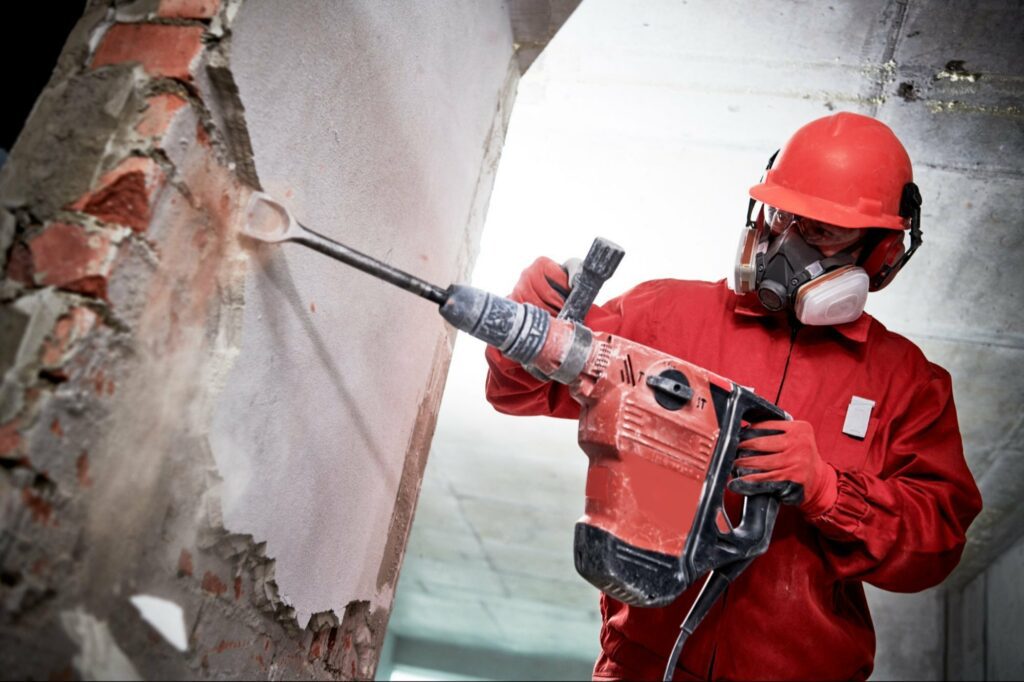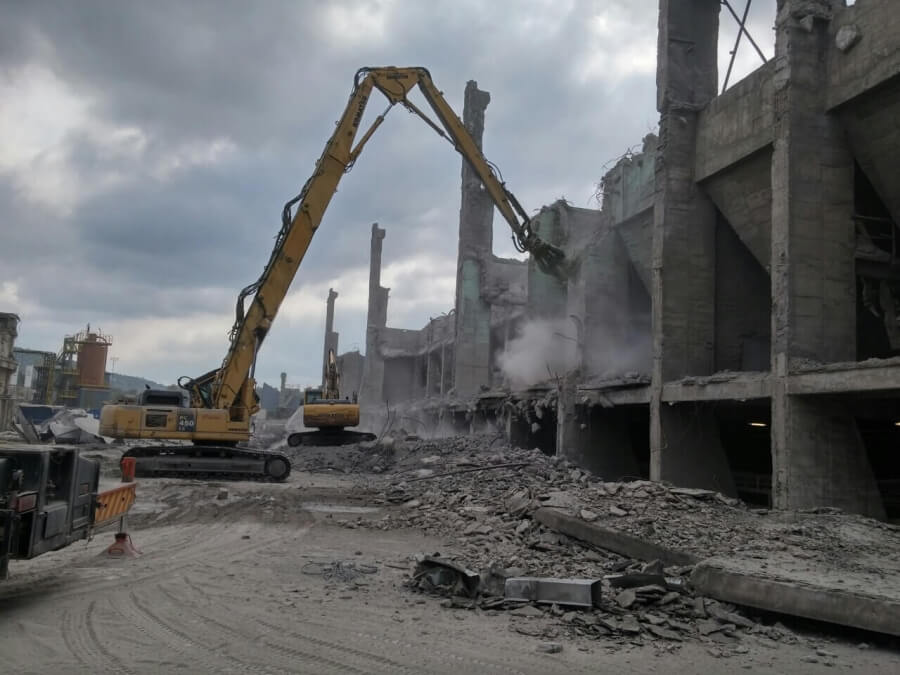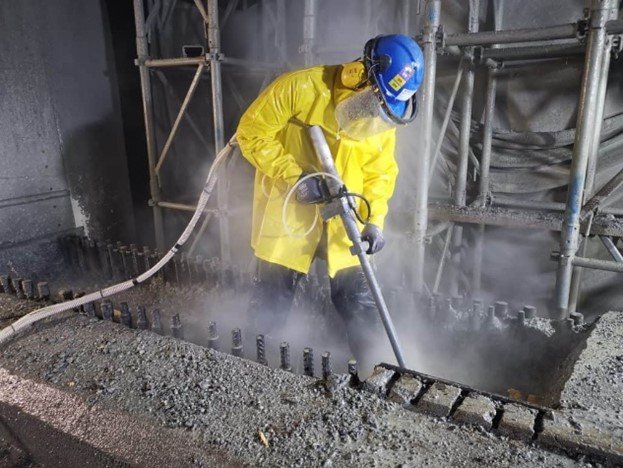Selective demolition is the process of carefully dismantling or removing specific parts or sections of a building or structure while preserving the integrity of the remaining portions. This method is essential in renovation, remodelling, and adaptive reuse projects where maintaining certain structural elements or historical features is crucial. It requires precise planning and execution, ensuring safety and minimising damage to the preserved areas. Selective demolition is also environmentally beneficial, as it allows for the reuse and recycling of materials, reducing waste and the need for new resources.
Where are selective demolition methods used?
1. Urban Renewal Projects: In densely populated urban areas, selective demolition is used to renovate and repurpose buildings without disturbing surrounding structures.
2. Historic Preservation: It is employed in the restoration and renovation of historic buildings, where preserving original architectural features is essential.
3. Commercial Renovations: Office buildings, shopping centres, and other commercial properties use selective demolition to update or reconfigure spaces without shutting down entire operations.
4. Residential Renovations: Homeowners and developers use selective demolition to remodel parts of a house, such as kitchens or bathrooms, while keeping the rest of the home intact.
5. Industrial Upgrades: Factories and industrial plants may use selective demolition to remove outdated equipment or sections of the facility while keeping the rest of the operation running.
6. Infrastructure Projects: In bridges, tunnels, and other infrastructure, selective demolition can be used to replace or repair specific components without completely dismantling the entire structure.
7. Disaster Recovery: Following natural disasters, selective demolition is used to remove damaged sections of buildings while preserving and repairing the remaining parts.
Advantages of selective demolition
- Reduces costs by preserving parts of the existing structure and minimizing the need for new materials and construction.
- Allows for the reuse and recycling of materials, reducing waste and environmental impact.
- Enables partial demolition in occupied buildings, reducing disruption to ongoing activities or operations.
- Focuses on removing hazardous or damaged sections while keeping stable parts intact, ensuring overall safety.
- Facilitates targeted modifications, renovations, and space reconfigurations to meet new functional requirements.
- Supports compliance with updated building codes and standards by allowing for selective removal and replacement of non-compliant components.
- Faster than full demolition and reconstruction, allowing projects to progress more quickly.
- Conserves resources by maximising the use of existing structures and materials.
- Facilitates urban renewal and redevelopment projects by enabling strategic upgrades without extensive teardown.
Different methods for selective demolition
Manual Demolition
Manual demolition is a widely used method, particularly due to its cost-effectiveness and the abundance of available labour. This method involves the use of basic hand tools such as hammers, chisels, saws, and crowbars to carefully dismantle specific parts of a structure. It is particularly effective in urban areas where precision is paramount, and there is a need to avoid damage to nearby structures. Manual demolition is often employed in the renovation of old buildings, historical preservation projects, and residential remodelling, where preserving certain architectural features is crucial. This method, while labour-intensive, offers high levels of control and precision.

Mechanical Demolition
Mechanical demolition utilises heavy machinery like excavators, bulldozers, and cranes equipped with specialised attachments such as hydraulic breakers, shears, and pulverizers. This method is highly efficient and is commonly used for large-scale commercial and industrial projects. Mechanical demolition allows for the rapid removal of substantial portions of a structure, making it ideal for projects where time and efficiency are critical. The equipment used can handle various materials, including concrete, steel, and masonry, and can operate in a controlled manner to ensure the safety and integrity of the remaining structure.

Saw Cutting
Saw cutting involves the use of diamond-tipped saws to cut through materials such as concrete, masonry, and stone. This method is employed to create openings or remove specific sections of walls, floors, and other structural elements without causing damage to the surrounding areas. Saw cutting is particularly useful in precision demolition tasks, such as creating doorways, windows, or pathways for utilities. The method is favoured for its accuracy and ability to minimise dust and noise, making it suitable for projects in sensitive environments like hospitals, schools, and residential areas.

Deconstruction
Deconstruction is a method that focuses on the systematic disassembly of a structure to salvage reusable materials. This approach is gaining traction in India due to increasing awareness of sustainability and waste reduction. During deconstruction, components such as doors, windows, fixtures, and structural elements are carefully removed to be reused or recycled. This method not only reduces the amount of construction waste but also conserves resources by maximizing material recovery. Deconstruction is often used in renovation projects, where certain parts of a building can be preserved and integrated into new designs.

Hydrodemolition
Hydrodemolition employs high-pressure water jets to remove concrete or other materials. This method is particularly effective in situations where dust and noise control are essential, as it minimizes the environmental impact typically associated with traditional demolition methods. Hydrodemolition is used to selectively remove deteriorated or damaged concrete from structures such as bridges, dams, and parking garages. The precision of this method allows for the preservation of reinforcement bars and other structural components, ensuring the integrity of the remaining structure while preparing it for repairs or upgrades.

Thermal Cutting
Thermal cutting is a precise demolition method that involves the use of high-temperature methods to cut through metal components within structures. Common methods include oxy-fuel cutting and plasma cutting. Oxy-fuel cutting uses a combination of oxygen and fuel gases (such as acetylene) to produce a flame hot enough to melt and sever metal. Plasma cutting, on the other hand, employs an electrically conductive gas to create a high-temperature plasma arc capable of cutting through various metals with high precision. This method is particularly effective for dismantling steel structures, pipes, and other metal elements, offering clean and accurate cuts without affecting the surrounding materials. Thermal cutting is widely used in industrial settings, and in the demolition of bridges and high-rise buildings, where precision and control are paramount.

Robotic Demolition
Robotic demolition involves the use of remote-controlled robotic machines to perform selective demolition tasks. This method enhances safety by allowing operators to work from a distance, particularly in hazardous environments or areas with limited accessibility. Robotic demolition machines are equipped with various attachments such as breakers, crushers, and shears, enabling them to handle a wide range of materials and demolition tasks. This method is increasingly being used in complex projects, such as nuclear facilities, chemical plants, and confined spaces, where precision and safety are paramount.

Chemical Demolition
Chemical demolition involves the use of chemicals to weaken or dissolve specific materials, facilitating their removal. This method is precise and useful in delicate operations where traditional mechanical methods might cause excessive damage or are impractical. Chemical agents are applied to concrete or other materials, causing them to crack and break apart. Chemical demolition is often used in confined spaces, sensitive environments, or where noise and dust must be minimised. It provides a controlled way to remove sections of a structure without the need for heavy machinery.

Selective Blasting
Selective blasting uses small, controlled explosive charges to remove specific sections of structures. This method requires meticulous planning and execution to ensure precision and safety. Selective blasting is particularly useful in specialised projects where traditional demolition methods are not feasible or would cause excessive damage. It is used in situations such as removing portions of large buildings, industrial structures, or rock formations. The method involves strategically placing explosives to achieve the desired outcome while preserving the surrounding areas.
How to select the right selective demolition Method?
- Define the extent of demolition and project goals (renovation, preservation, etc.).
- Assess building materials (concrete, steel, wood) and overall condition (age, stability).
- Evaluate location (urban vs. rural), available space, and site accessibility.
- Ensure methods address safety for workers, occupants, and surrounding structures.
- Consider sustainability goals, and methods for dust, noise control, and material recycling.
- Review project costs and select a method that fits the budget and meets deadlines.
- Check compliance with local regulations, building codes, and obtain necessary permits.
- Ensure availability of skilled labour and necessary equipment for the chosen method.
Conclusion
With growing emphasis on sustainability and precision, selective demolition not only facilitates urban redevelopment but also contributes to environmental conservation and historical preservation. As technology and expertise in this field continue to advance, selective demolition will play an increasingly vital role across different types of projects.
In this article we have discussed selective demolition uses, advantages, different methods and how to select the right method. In an upcoming article we will analyse different equipment and products used for it.



